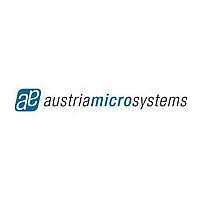as5030 austriamicrosystems, as5030 Datasheet - Page 28

as5030
Manufacturer Part Number
as5030
Description
8-bit High-speed Absolute Magnetic Rotary Encoder
Manufacturer
austriamicrosystems
Datasheet
1.AS5030.pdf
(33 pages)
Available stocks
Company
Part Number
Manufacturer
Quantity
Price
Part Number:
AS5030
Manufacturer:
AMS
Quantity:
20 000
Company:
Part Number:
as5030-ATST
Manufacturer:
AMS
Quantity:
1 001
Part Number:
as5030-ATSU
Manufacturer:
AUSTRIAM
Quantity:
20 000
AS5030 8-bit Programmable Magnetic Rotary Encoder
10.3 Magnet size
Figure 32 to Figure 34 in this chapter describe a cylindrical magnet with a diameter of 6mm. Smaller magnets may also be used,
but since the poles are closer together, the linear range will also be smaller and consequently the tolerance for lateral
misalignment will also be smaller.
If the ± 0.25mm lateral misalignment radius (rotation axis to IC package center) is too tight, a larger magnet can be used.
Larger magnets have a larger linear range and allow more misalignment. However at the same time the slope of the magnet is
more flat which results in a lower differential amplitude.
This requires either a stronger magnet or a smaller gap between IC and magnet in order to operate in the amplitude-controlled
area (AGC > 0 and AGC < 63).
In any case, if a magnet other than the recommended 6mm diameter magnet is used, two parameters should be verified:
Note: for preferred magnet suppliers, please refer to the austriamicrosystems website (Rotary Encoder section).
Rev. 1.8
•
•
INL [°]
Verify that the magnetic field produces a sinusoidal wave, when the magnet is rotated.
Note: this can be done with the SIN-/COS- outputs of the AS5030, e.g. rotate the magnet at constant speed and
analyze the SIN- (or COS-) output with an FFT-analyzer.
It is recommended to disable the AGC for this test (see 4.20).
Verify that the B
the magnet supplier(s).
Alternatively, the SIN- or COS- output of the AS5030 may also be used together with an X-Y- table to get a B
the magnet (as in Figure 32 or Figure 33)
Furthermore; the sinewave tests described above may be re-run at defined X-and Y- misplacements of the magnet to
determine the maximum acceptable lateral displacement range.
It is recommended to disable the AGC for both these tests (see 4.20).
5,000
4,500
4,000
3,500
3,000
2,500
2,000
1,500
1,000
0,500
Figure 34: Typical error curve of INL error over lateral displacement (including quantization error)
0,000
z
X Displacem ent [µm ]
-1000
-Curve between the poles is as linear as possible (see Figure 32). This curve may be available from
-750
-500
INL vs. Displacement: AS5030 for AGC24
-250
www.austriamicrosystems.com
0
250
500
750
1000
-1000
-750
-500
-250
0
250
Y Displacem ent [µm ]
500
750
1000
4,500-5,000
4,000-4,500
3,500-4,000
3,000-3,500
2,500-3,000
2,000-2,500
1,500-2,000
1,000-1,500
0,500-1,000
0,000-0,500
Page 28 of 33
z
-scan of












